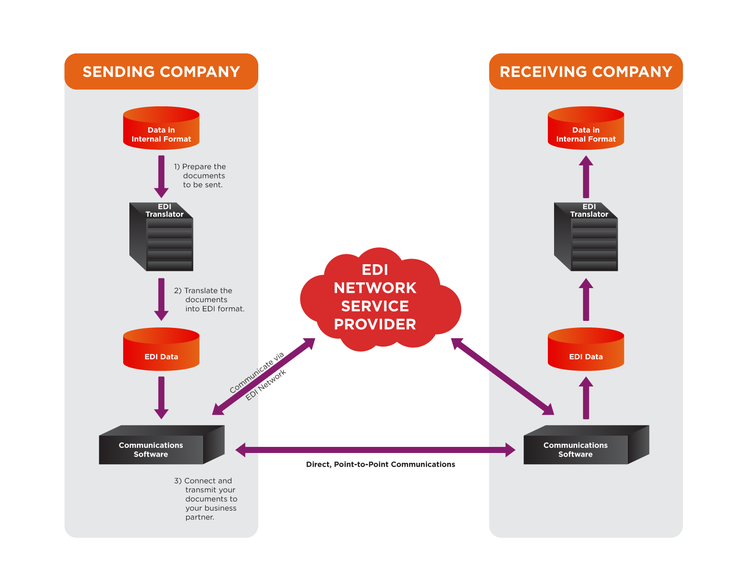EDI & BASICS
Electronic Data Interchange (EDI) is the computer-to-computer exchange of business documents between companies. EDI proves to be fast, reliable, cost saving, and a revenue enhancing (maximizing) business practice.

Electronic Data Interchange (EDI) is the computer-to-computer exchange of business documents between companies. EDI proves to be fast, reliable, cost saving, and a revenue enhancing (maximizing) business practice.

SET UP, RECEIVE AND SEND EDI
WAREHOUSE AND 3RD LOGISTICS (3PL) DOCUMENTS
INTEGRATION OF EDI DATA WITH YOUR SYSTEM
ADVANCE SHIP NOTICE (ASN) W/SHIPPING CONTAINER LABELS, AUTO-INVOICING
COMMUNICATIONS SERVICE TO/FROM TRADING PARTNERS
OTHER CUSTOM SERVICES
In EDI, information is organized according to a standard format. North American Standards are known as ANSI standards, while International EDI standards are known as EDIFACT standards. Each year these standards are reviewed and updated to accommodate new business and ensure accuracy. The process of using EDI is straight forward: a standard document (mutually agreed upon) is translated into a specific format and sent (or received) via a secure communication (data transport) method. The data is broken into smaller segments depending on the type of business you are involved with. The ANSI standard format covers all industries with approximately 500 different document types.
INTERCHANGE ID:
NETWORK:
DOCUMENT TYPES:
ANSI:
COMMUNICATION / DATA TRANSPORT:
VALUE ADDED NETWORKS (VANS):
TRADING PARTNER OR HUB:
AS2:
FILE TRANSFER PROTOCOL (FTP):
EDI E-MAIL:
SFTP SECURE FILE TRANSFER PROTOCOL:
WEB SERVICE:
EDI 858: